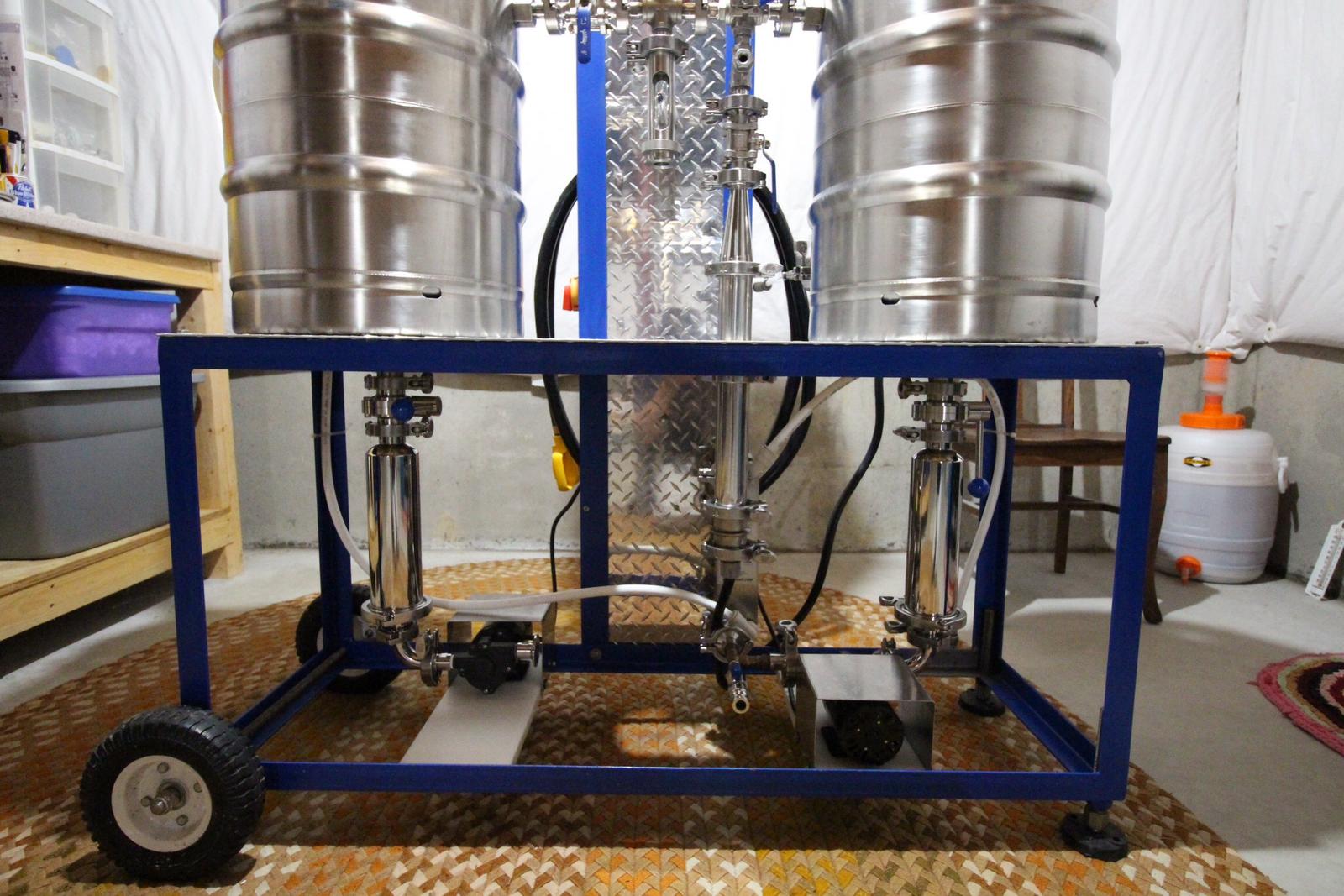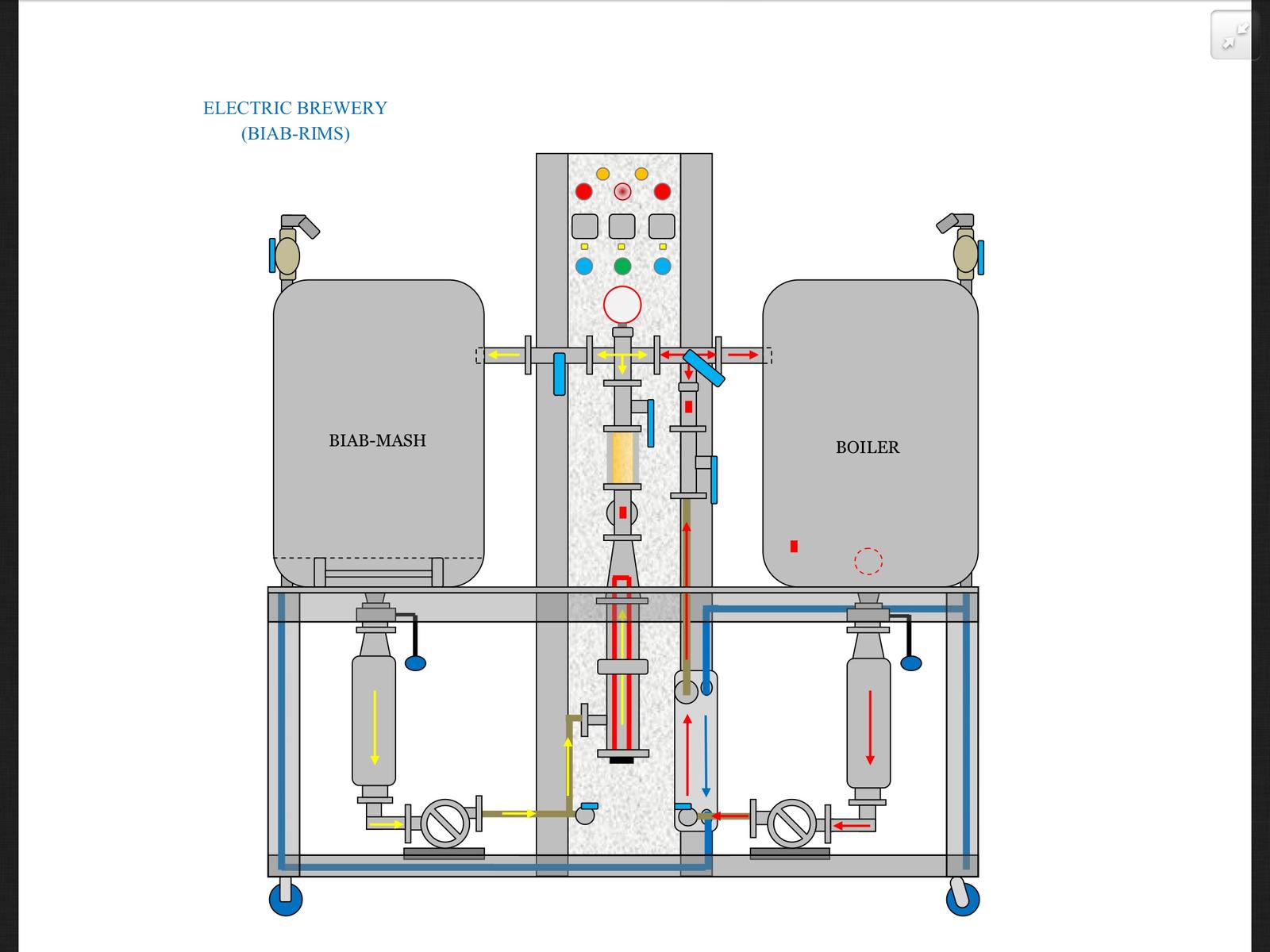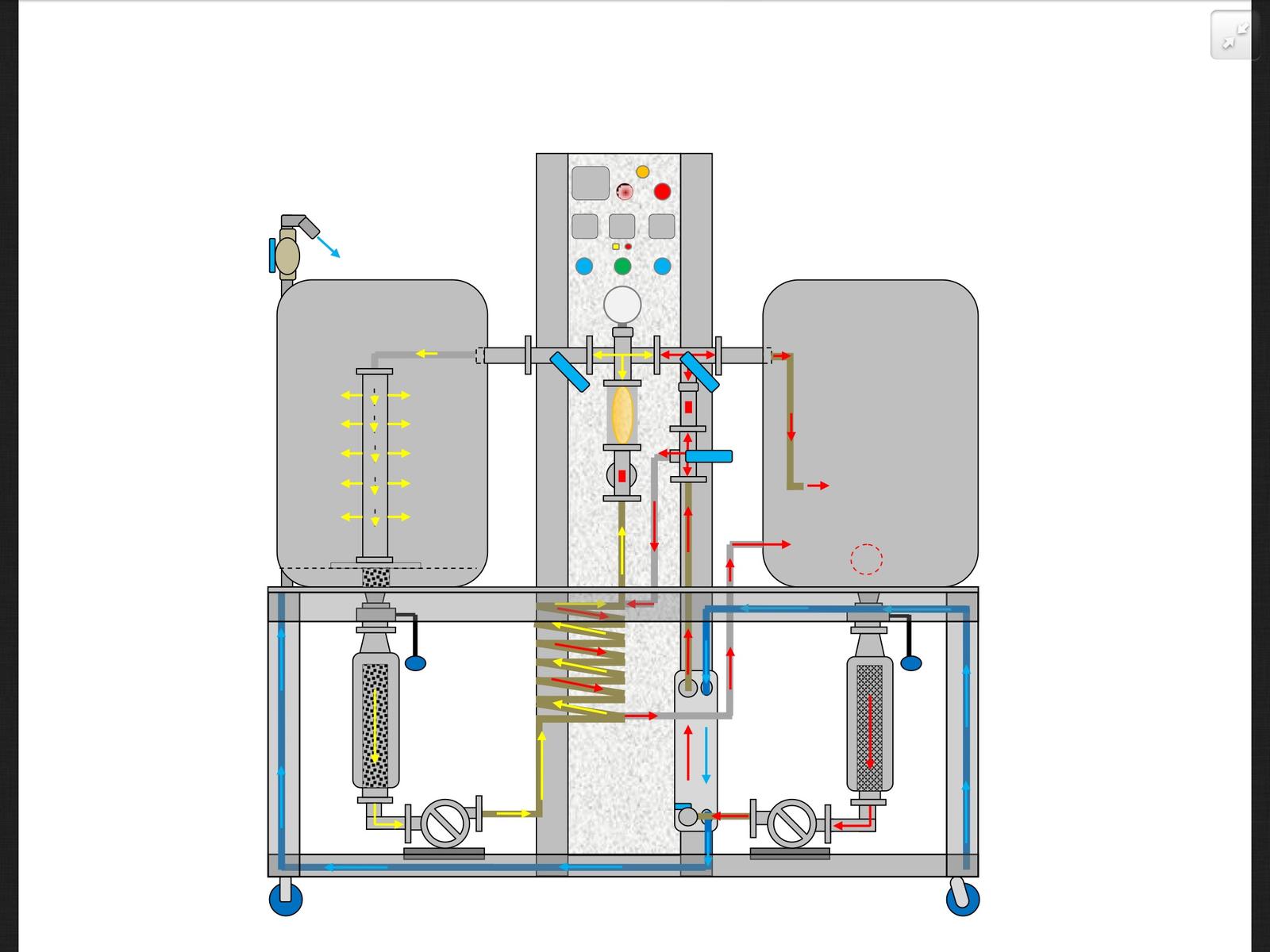I hope I'm not out of line if I make a few comments here. I'm not an expert, but at the same time I've messed with a few brew systems in my time. Maybe something I say will help. I'd hate to see you spend a bunch more time and money chasing issues that might be easily solved.
First off, you aren't having a RIMS problem so much as a circulation problem. Your RIMS setup would probably work fine if you solved the circulation problem, or could be tweaked to be so.
Any grain bed, no matter how its set up is going to flow a ton of fines in the first circulation or whenever its disturbed. Its just a fact of life. No matter what filter you put under the mash vessel is going to get plugged, if its acting as a filter at all. The best advice I can give here is to probably do without the filter under the MLT and your system will work fine. Just replace it with a piece of pipe. I'm not sure why you feel you need a filter there in the first place. If you recirculate the wort for any length of time the bed will begin to act as a filter and it will run crystal clear sooner or later.
Ditto with hops filters off the boil kettle. I'm all for keeping hops out of the fermenter, but that hops filter doesn't have enough area to filter everything coming out of the brew kettle. None of them do. They are designed to catch the odd leftover hop, that sort of thing, not run recirculating wort through, especially non whirpooled recirculating wort.
So my best advice would be to drop both filters and see where that gets you. Run a couple batches like that and see how they come out.
RIMS versus HERMS.
You discovered the drawback of RIMS, that being scorched wort. It isn't a problem if you keep the power low and the flow high, but if you don't watch it closely, you can wreck the batch, as you learned. Even worse than wrecking batches is making batches that have a subtle burnt or dark flavor and not realizing it or not being able to get rid of it.
HERMS has a different problem in that generally the heat exchange to the wort is slow. You'll never scorch the wort, but it takes a long time to do step mashes. This is usually because the delta T of the heating water is low (mash at 150ish, water at 170F if its going to be sparge water), flow rates are low, etc. This is why people direct fire MLTs.
Direct firing an MLT has its place. You can still scorch wort, but its got way more heating area than a RIMS element. Just compare the surface area of the bottom of an MLT with the surface area of a RIMS element. With direct firing you can get a decent amount of heat into the mash and yet not scorch it. The price for this is having a burner under the MLT, something which the eBrew guys want to avoid. An alternative would be to put an induction unit under the MLT, but for that you need the right kind of pot and you can't have the nice, neat drain under the vessel like you have.
So I'm not seeing why you have this system set up to be no sparge. It would be quite easy to add a simple picnic cooler and have a sparge setup. Doing so would allow you to run a thinner mash which would filter better and probably extract less tannins from the malt. I'm all for speed and simplicity, but not at the expense of beer quality. But then my thing is lagers, where such imperfections show up and are plain to realize.
Typically a HERMS system is run with a 3rd (heated) vessel. Being that you are planning to use a fully diluted mash, you can probably get away with using the boil kettle as your HERMS heat source, but if you have any hiccups in the brew process its going to be very complicated to recover. I suspect you are planning to circulate the wort in the MLT until its done mashing, then stepping the temp of the mash to the mash out temp (170+) and then quickly draining the BK and pumping the mash over to it. That will work, sort of, but you can't pump it over real fast or you'll get a ton of fines and debris over in the BK. And you'll compact the bed as it drains down and leave a bunch of wort in the mash tun. It has to be pumped over slowly, say 15 minutes or so. And when you do that, I think the temp in the MLT is going to drop quite a bit. Having said all that, I've always been a sparger, so the only thing I know about no sparge is when I run my sparges too fast and these are the problems I run into.
So... if it were me, I'd do the following
- get rid of the MLT filter.
- stick with RIMS, probably turning down the element power by running it on 120V.
- get rid of the BK filter.
- brew 5 batches and see what you learn.
One more thing... I understand wanting to use Triclamp hardware for ease of cleaning, disassembly, etc, but as you found, its expensive, especially when you are making changes during the prototype/testing phase. If I were you I'd make the next round of changes with simple hose and work the bugs out that way. Once you get everything perfected you can plumb it up with TC hardware.
Final comment... you have what I refer to as a boom bust development cycle. You go hard on a design, implement it beautifully, test it once or twice and then its back to the drawing board. I recommend a more incremental approach whereby you plan to go through a couple throw away prototypes as learning experiences and implement things nicely once you have something that works. And spend more time actually using and playing around with and tweaking what you've built before making a big design change.
I love some of the design elements of your system. I'm all for eliminating the 3rd vessel, ie the HLT. I hope you keep working on your system and sharing the results with us.








![Craft A Brew - Safale BE-256 Yeast - Fermentis - Belgian Ale Dry Yeast - For Belgian & Strong Ales - Ingredients for Home Brewing - Beer Making Supplies - [3 Pack]](https://m.media-amazon.com/images/I/51bcKEwQmWL._SL500_.jpg)




























































